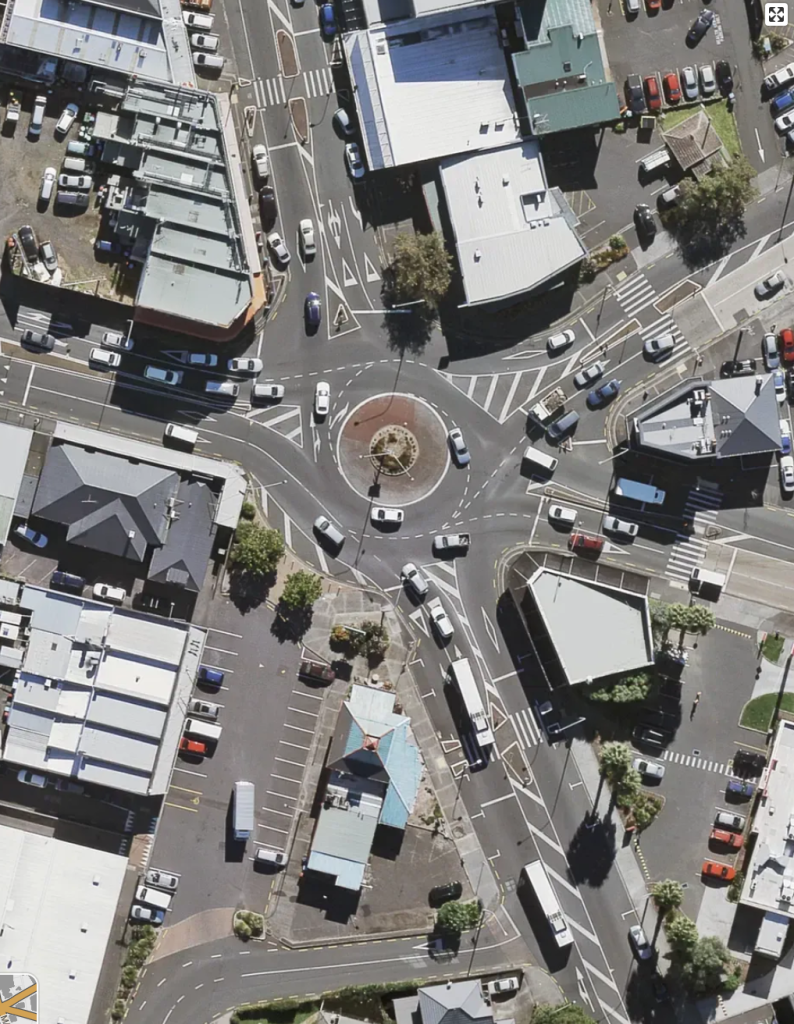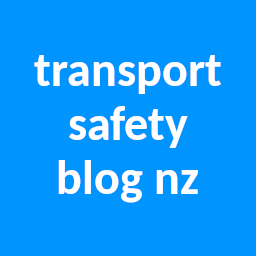Controversy has recently surrounded the Royal Oak Roundabout in Royal Oak, Auckland, which is shown below.

NZ Herald carried an article on 9 January 2023 asking if it was Auckland’s “most notorious roundabout”. The article states that the roundabout was upgraded only last year and had a history of 61 crashes over a four year period. Whilst there are many things which could be said about this roundabout, there are two very obvious and very poor design factors which are of great concern and will create issues for road users.
The first issue is the placement of pedestrian crossings right next to the entrances/exits of the roundabout. In fact, they are provided on all five of these. This creates an unneeded risk of driver distraction leading to people being run over on the crossings. Driver distraction is a very important factor in intersection design that highlights the risks of making intersections too complex and frequently features as a major factor in railway crossing accidents where these are placed too close to road intersections. In this case, it looks very much like Auckland Transport decided to maximise their cost benefit by creating raised platforms to slow the traffic, and deciding to combine these with pedestrian crossings. As drivers have to make their safe passage through the roundabout a primary consideration, the placement of the pedestrian crossings so close to the intersection increases the risk that a driver will not see a crossing in time to safely stop if a pedestrian is on a crossing. However, Waka Kotahi’s roundabout design guidelines advocate that pedestrian crossings should be placed on raised platforms at the entrances/exits of roundabouts or intersections in general. It is unclear therefore how much consideration of driver workload has been given in these guidelines.
The second major safety issue is the fact that this roundabout has two lanes in all of its approaches and only one of the exits, only a part of the roundabout itself is dual laned. Looking at Waka Kotahi’s own instructions to drivers for navigating roundabouts, the key safety assumption for a multi laned roundabout is that road users should not have to change lanes through the roundabout. This will ensure the maximum safety for drivers travelling through as they don’t have to change lanes to exit onto a road that has only one lane. The problem with this roundabout is that several of the exits only have a single lane. This means a lane change is unavoidable and the risk is that traffic will not be able to merge successfully before the exit is reached. The roundabout actually is single laned in part and two laned in other parts. For the parts where there are two lanes on approaches, the fact that the roundabout is single laned is bound to create problems for people because the normal rules for dual laning of a roundabout, apparently, do not apply. There is no clear reason why this should be so.
Whilst NZTA touts that roundabouts are safer than other forms of unsignalised intersections, they are not an answer to the issues of such intersections. A roundabout does not solve safety issues where it is difficult at times of heavy traffic for the roundabout to be entered by any vehicle. This can occur at any intersection where one direction is carrying a large volume of traffic and is not solved by a roundabout. Roundabouts require people to make skilled judgements about which lane they need to be in and whether there is a big enough gap available if they need to change a lane or at an exit. Where there are two lanes at entrances/exits the roundabout should be dual laned throughout, not like in this case where there are dual lanes only in parts of it.
TSBNZ will consider making OIA requests to Auckland Transport about the obvious contradictory design factors in this intersection.
